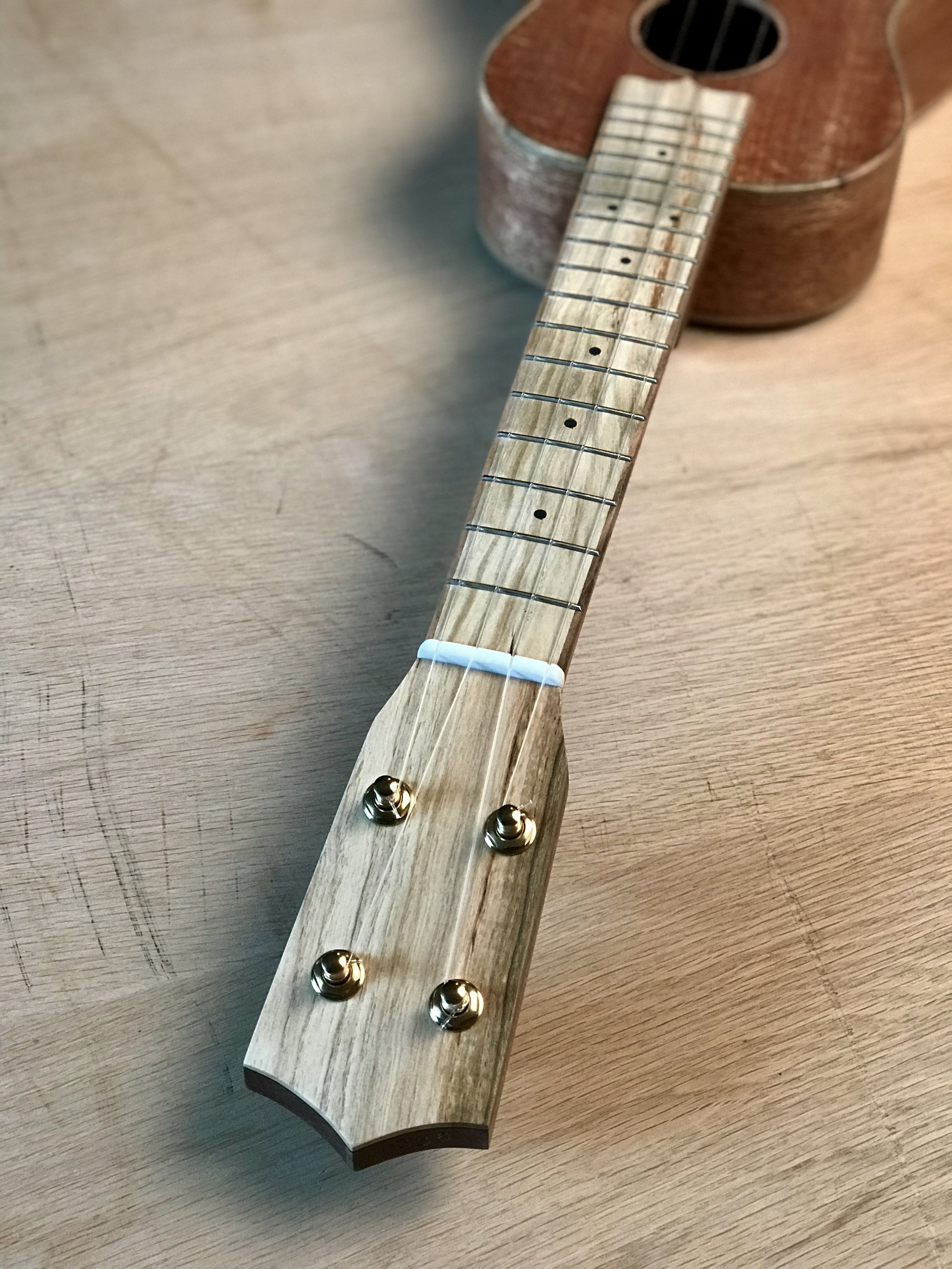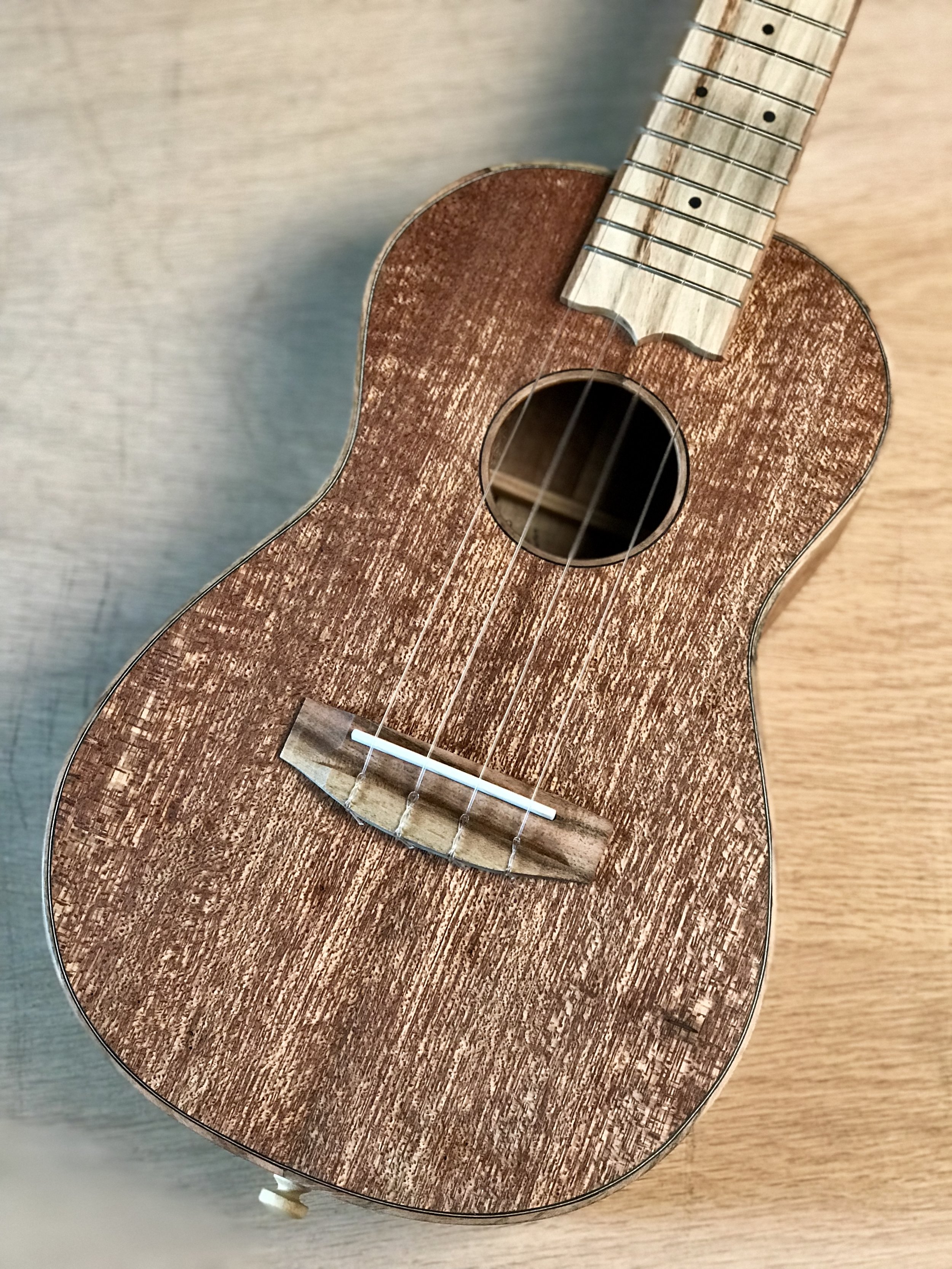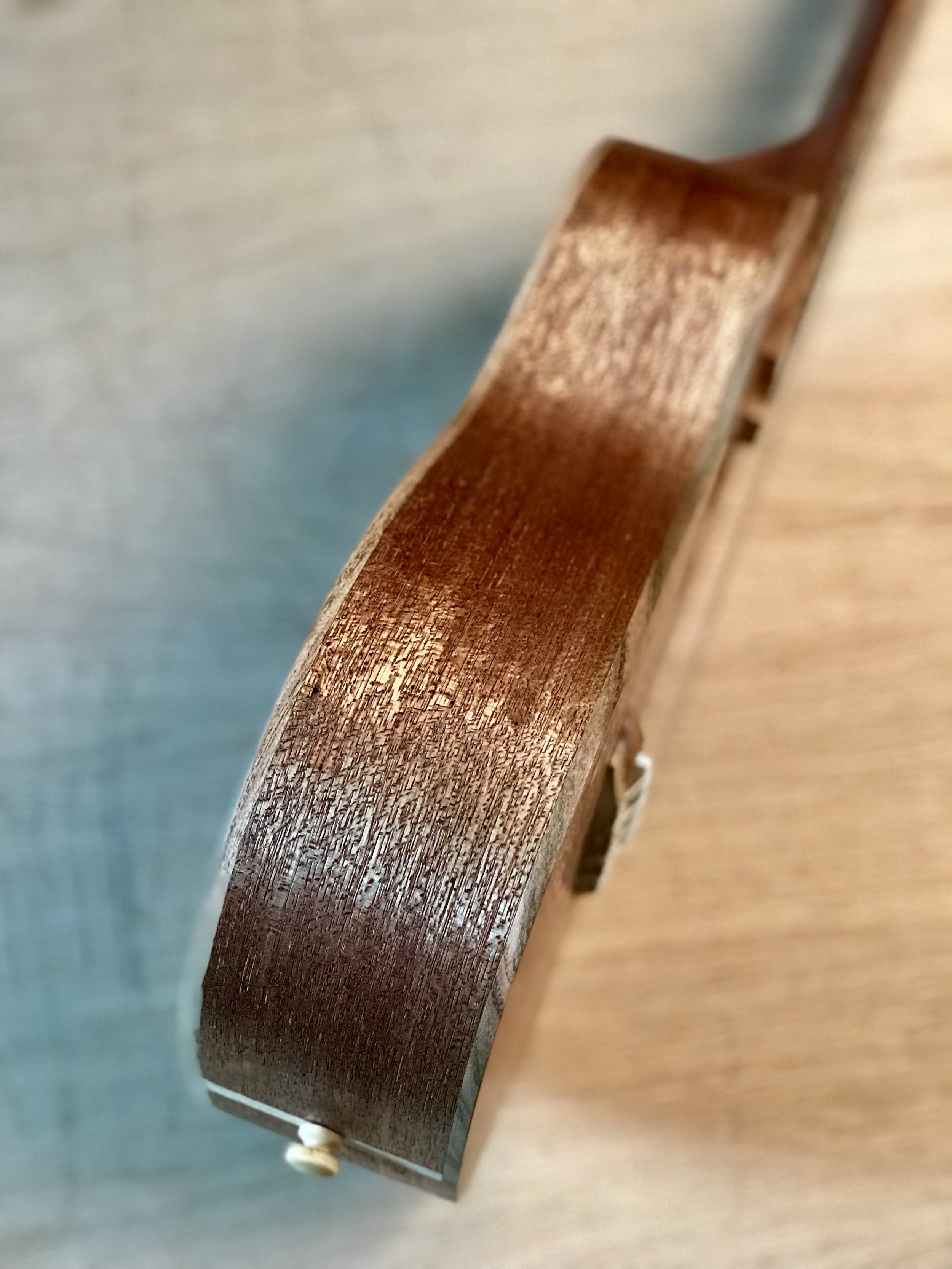To me, the Japanese concept of Wabi-Sabi applies to my instruments in three ways. 1) Aesthetically: Muted natural colors, smooth but variable textures, a celebration of unique flaws and inclusions and a reverence for natural materials. 2) Philosophically: The idea that nothing is perfect. What makes you flawed is what makes you unique, beautiful and worthy of celebration. 3) Temporally: The idea that objects change over time with use and weathering of age. The evidence of its use is seen as beautiful.
The owner of this uke, Peter, told me he wanted mahogany and he liked Wabi-Sabi. He left the rest up to me. I chose an amazing set of figured mahogany with dozens of tiny bug holes from the Carpenter ant stash for the body, some straight grain mahogany for the neck and some simple, muted pistachio for the fretboard, binding and trim. But, viewing the instrument from 10 feet away is completely different than up close. When you zoom in, the mahogany grain pops, the book matched bug holes show up and the “plain” pistachio show off tiny variations and color changes. Most notably, there is a bug hole that grazes the lower bout in an amazing feat of wood boring. It wasn’t visible when I bent the sides, but showed up when sanding. I see it as a happy accident to celebrate and a reminder of the chaos of the world intruding on our daily work. We can embrace it or scream about it, it’s up to us.







